#field guide to insects of north america
Text
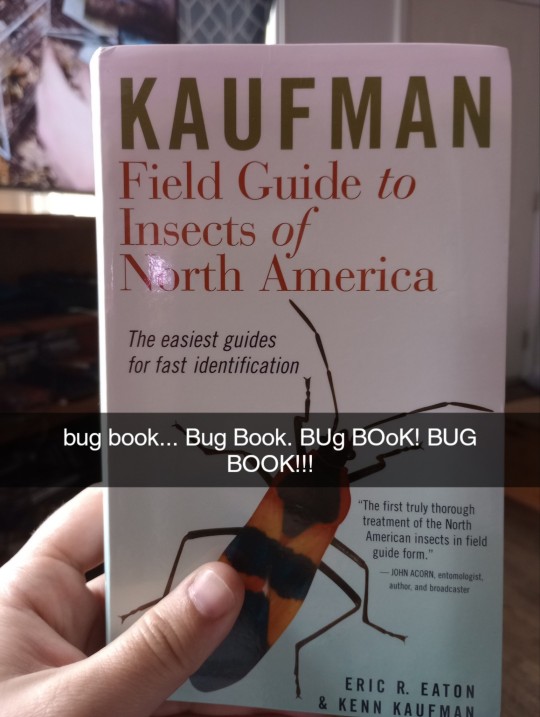
#book blog#bug field guide#bug book#bugs#insects#invertebrates#arthropods#field guide#field guide to insects of north america
8 notes
·
View notes
Photo
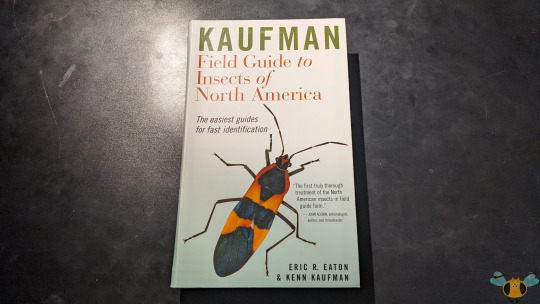
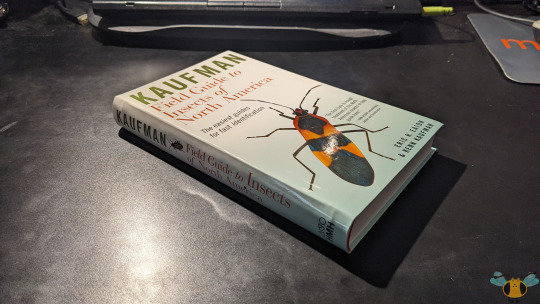
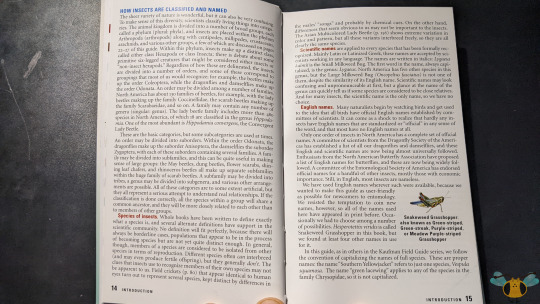
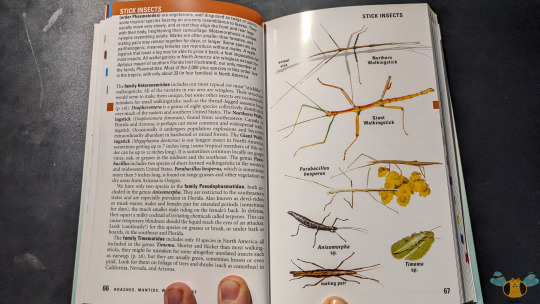


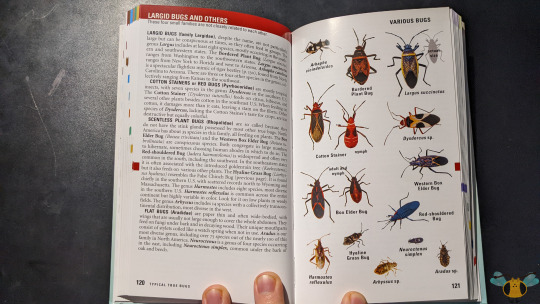
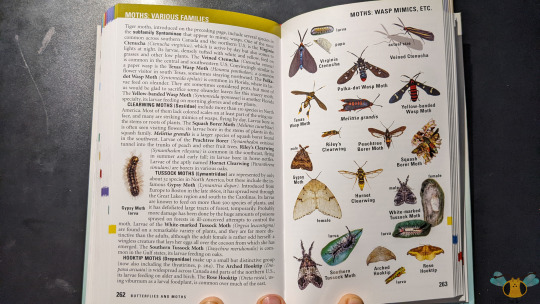


Kaufman Field Guide to Insects of North America, by Eric R. Eaton and Kenn Kaufman
I’ve added a new field guide to my growing collection of insect identification resources. This book was recommended to me after I picked up the Audubon Butterfly guide, and I have to say, I quite enjoy this book and it will be accompanying me on outdoor daylong bug hunts alongside the Audubon books. If you’re looking for something a bit more general, perhaps as an entry resource to help you catalogue and identify insects as a hobby, this book is a great starting point. The format of the book is mostly consistent with Pictures 4-8: key information on the left side of the book and pictures of insects on the right. The information is simple to understand and very articulate, highlighting crucial information that can help you sort insects into their different orders and families. For example, in the Beetle section, there are separate pages that would highlight the key characteristics that make each insect special which in turn allows a simple identification for each Beetle such as what makes a Leaf Beetle and a Longhorn Beetle. Many prominent species are highlighted in the field guide, but mostly those living in Canada and the USA. Of course, the guide can’t cover every insect specie, but the descriptions given are to the point you may recognize some of the more common species included. For something more technical, you many have to turn to another guide or consult an internet resource.
The insect imagery in the book is quite good, really aiding the text descriptions. I give many thanks to the contributing photographers of this guide and I wish that there were sections that would showcase larger insect pictures and diagrams. It would definitely help with the author’s goal of “naked eye identification” and to highlight some of the more rare insects, insects that look similar to other insects, and insects that (while presumed common) aren’t part of common knowledge. It’s for this reason that I highlight Picture 6 which documents Mantidflies (Mantispids). These are not Mantids or Flies and they can resemble Wasps, but they are in fact Neuropterans! It’s not something everyone would know and thus I think it should receive a bit more attention. A little bit of information can make the difference between knowing which insects to avoid and which look fearsome but are harmless, just like the Mantidflies. As well, finally a visualization of Snakeflies on this blog! Finally, what I enjoyed most about this field guide was the passion and love for insects on display in the writing. The people who wrote and contributed to this book clearly love these creatures and want to share with others why insects are important, what we can learn from them and how they impact Earth and our lives. All this is presented in a way that (aside from a few scientific or technical terms) is easily digestible and readily applicable.
To all those looking to create a hobby based on insects, learn the basics of insect identification or if you have a real passion for insects, I do recommend this book. I’ll be using it where I can, and until then it will stay with the other books I reference lined up on the bookshelf. To conclude, there are sections in the book on Arachnids and non-insect hexapods which I also appreciate, if only to highlight the difference between them and insects.
For additional insect literature, you may visit the Blog Resources page.
#jonny’s insect catalogue#insect field guide#kaufman field guide to insects of north america#field guide to insects of north america#north america insect guide#field guide#insect identification guide#amateur insect guide#insect pictures#insect facts#insect identification#entomology#invertebrates#arthropods
6 notes
·
View notes
Photo

National Audubon Society Field Guide to Insects and Spiders: North America
Fresh Off the Boat: "Good Morning Orlando"
#National Audubon Society Field Guide to Insects and Spiders: North America#fresh off the boat#fotb#constance wu
17 notes
·
View notes
Note
Could I mayhaps know what's the name of that arachnid field guide you have 0//0 it looks really pretty and I have. A thirst for all arachnid related field guides and biology books, love those critters
The Golden Guide to Spiders and their Kin! There were lots of them, originally made in the 60's or 70's I believe, and they used to still be so common when I was a kid - still in print, and sold for just a couple dollars everywhere - I thought everybody had a few! But now they seem to be forgotten.
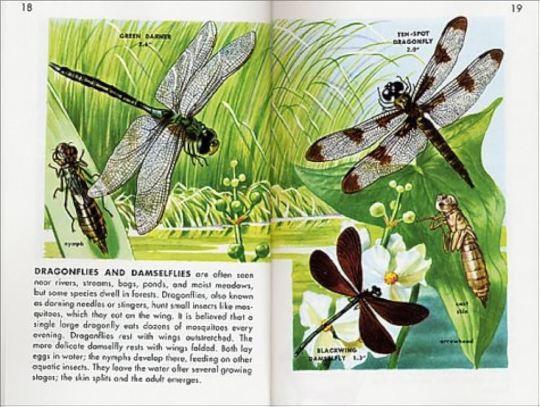
I had the spiders one, insects one and "seashores" one (mantis shrimps and nudibranchs!!) before I could even read, just looking at the pictures all day. As I learned to read they were how I learned concepts of taxonomy and ecology, why I knew what a "parasitoid" was in first grade and I'd talk constantly about insects that aren't really RARE, but culturally most people never heard about. These books made things like velvet ants, bolas spiders and hairy millipedes seem to me like knowledge as ordinary as dogs and cats.

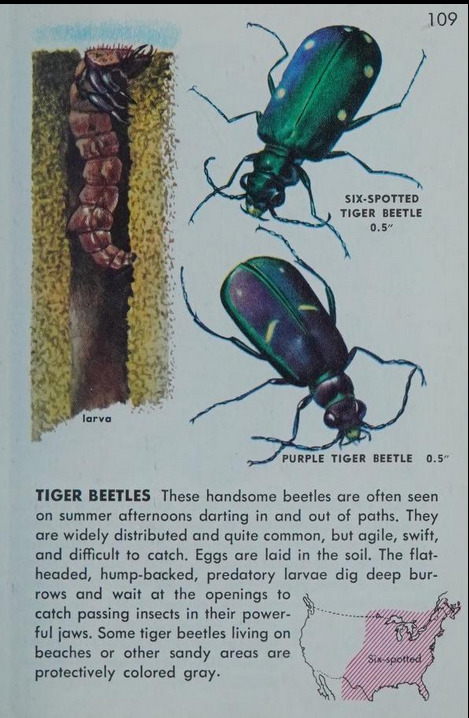
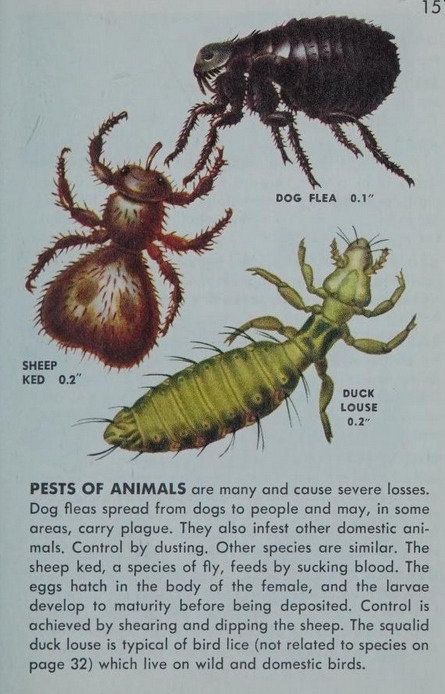
That "pests of animals" page in particular is why I knew there were wingless parasitic flies, and I thought that was so cool, I was obsessed with "SHEEP KED" for my entire childhood. This bug that nobody ever heard of when I mentioned it, but was at one time deemed worthy of inclusion in an everyday field guide.
And they include "duck louse" as an animal pest you're expected to encounter. Sheep and duck parasites?!.....Oh, right! When these books first published, it was still commonplace for almost everyone to have experience with farm animals. Most people at least had grandparents or aunts and uncles with a farm they might visit and help out on. Of course they would encounter sheep and duck parasites.
I think they still publish these, actually, I'm sure I still saw them in Barnes and Noble only a few years ago, but it's remarkable what a different America they were made under. My old copy even recommended DDT to control bed bugs....they did eventually edit that out in newer editions.

Some of their attitudes may be outdated here and there, and they're only intended for North American wildlife, but I think the golden guides might still be perfect introductions to their topics for anyone, anywhere of any age really?? They're such well-balanced overviews so densely packed with just the most essential information about each organism.
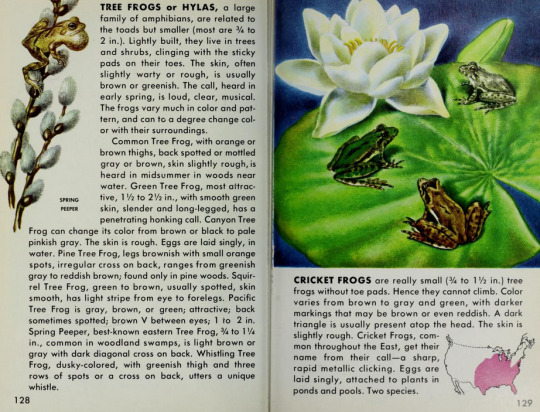
....Did people really ever just call tree frogs "hylas?!" It's one of their genus names, but was it also used as a common name anywhere? That's a cute idea. Maybe it was, briefly, so at some point to someone there was a concept of Frog, Toad, and Hyla?
141 notes
·
View notes
Text
BOTD: Black Phoebe
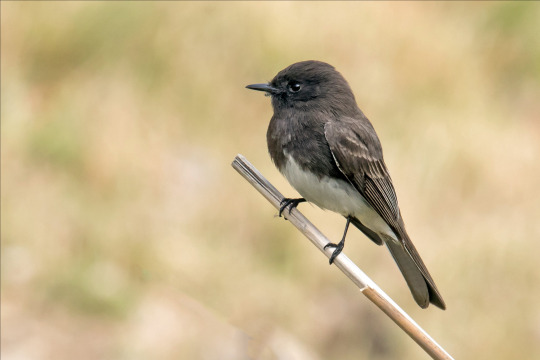
Photo: Mick Thompson
"The sharp whistled call of the Black Phoebe is a typical sound along creeks and ponds in the southwest. The birder who explores such areas is likely to see the bird perched low over the water, slowly wagging its tail, then darting out in rapid flight to snap up an insect just above the water's surface. Related to the familiar Eastern Phoebe of eastern North America, this species has a much wider range, living along streams from California to Argentina."
- Audubon Field Guide
#birds#black phoebe#birds of north america#north american birds#phoebes#flycatchers#tyrant flycatchers#passerines#birds of the us#birds of mexico#birds of central america#birding#birdblr#birblr#bird watching#bird of the day#Sayornis nigricans
97 notes
·
View notes
Text

A Field Guide to the Insects of America North of Mexico - Peterson Field Guide Series hardcover, 1970.
8 notes
·
View notes
Note
Where do you learn all these care specifics and scientific names and such? I've kept lots of critters (2 madagascar hissing roaches for a few years, some wild-caught adult grasshoppers and katydids for a few months, some mealworms into adulthood, etc) but I never knew stuff like what specific diseases they can catch and how to check, or how to tell different species of grasshoppers or whatever apart. Did you study this in college or just read up on things on your own? When I try to look up stuff like cockroach care I always end up with a million "how to kill nasty evil roaches because everyone hates them" articles.
I've been identifying bugs and using scientific names since I was little, so the years of experience helps, but there are many very accessible sources to help make learning about bugs easier!
I started with a field guide a lot like this, although some of the more basic ones don't have even half of the things you could find (just the more common ones). good field guides should also have scientific names, so you can learn those alongside the common names. scientific names are often much more helpful than the common names since those can change with region and language, but also because many bugs just don't have a common name.
if you happen to be in the US or Canada, BugGuide is a very useful resource where you can ask ID or look at other's submissions. obviously it's fairly limited by range, but has some very nice records and helpful experts.
iNaturalist is also a very helpful tool. it's fun to explore your local critters as well as those all around the world with the map, and you can get pretty decent IDs from the community (though often non-experts and the AI identifier can both be very wrong).
various forums and social media are also great for talking to other keepers and learning about bugs in captivity from them. as much as I hate it, Instagram has a nice population of bug keepers and just chatting with them can give you a lot of helpful tips and strategies.
79 notes
·
View notes
Text
Woman, Watching: Louise de Kiriline Lawrence and the Songbirds of Pimisi Bay, by Merilyn Simonds
This is a nonfiction biography of a woman who was an amateur scientist in pretty much the end of the era when you could have a successful career publishing academic articles without formal credentials, and only the beginning of the era when women could have a successful career in academia. She was born to Swedish nobility, her first husband died in the Russian revolution, she was a nurse to the famous Dionne Quintuplets, and she spent decades living in a tiny cabin in the woods in northern ontario taking intensive observations of birds.
A fascinating woman! But obviously I read this book because BIRDS. And it does mostly focus on her life after she falls headfirst into what became her true life's work of studying and understanding birds. I loved reading about her passion, her efforts, her extensive correspondence with bird experts across north america, her growing and deep familiarity with all the birds of her area, her dedication to keeping careful records of everything she saw and heard. Some of the things she studied continue to be relevant to ornithologists today!
But one through-line in the book was Louise's knowledge of the declining numbers of songbirds over the years, even from the very earliest days of her birding efforts in the 1930's. She knew, too, that the declining numbers were due to human activity, and she mourned their loss. Near the end of the book, the reader is provided with some numbers of just how great the decline in songbirds has been from when Louise began her records to now in the 2020's and it is honestly heartbreaking. Even just within Louise's life, she talks about the obvious and stark change in the experience of the morning bird chorus. It brings me near tears to think of how things used to be! Between habitat loss in both breeding grounds and wintering grounds, the effects of herbicides and insecticides, disappearing food due to the collapsing insect population, and more, songbird presence is a shadow of what it once was.
The other important thing I learned from the book is that the things I want to know about birds ARE out there, I just need to acquire bird books that are focused on specific species or specific families, instead of field guides, if I want to know everything about a bird's life and behaviour. NOTED. My bird library WILL be growing.
7 notes
·
View notes
Text
BIRD BLOG TIME FUCKERS
Okay so I have no clue how I'm gonna do this, I assume a format will arise as I go. But right now it's 3AM and I wanna talk about my favorite little birds: the Whooping Crane.
The Whooping Crane is one of the only two crane species native to North America, the other is the Sandhill Crane. (WE'LL GET INTO THOSE GUYS LATER I LOVE THEM TOO)
Anyway Whooping Cranes look like this:
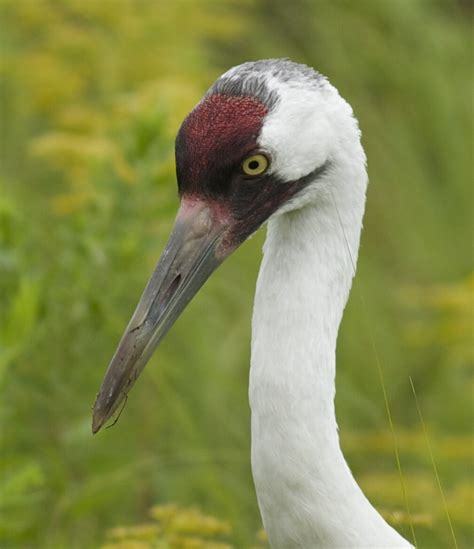

LOOK AT THAT AND TELL ME THEYRE NOT SO CUTE???

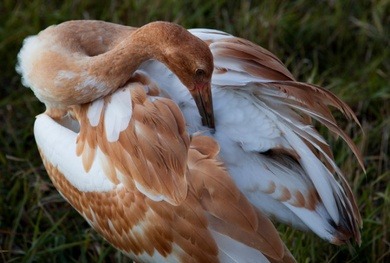
Appearance:
You can identify adult Whooping Cranes by their white feathers and patch of red on their head, which goes from their beaks to their cheeks! This patch of red is actually skin and isn't very feathery. They have long, pointed beaks, usually a gray color as you see above. They have yellow eyes and long, thin legs. I've also seen that these cranes often have the tips of their wings black.
Immature cranes have the same long beak and thin legs, but instead of white feathers, have a tan, cinnamon-brown coloring and no red spot. As they age, their white feathers come in, so the more brown feathers they have, the younger they are.
Did I mention that Whooping Cranes are really big? Because Whooping Cranes are BIG
The average height of these guys is approximately five feet (range of 4'1" to 5'3" from what I've seen) when they stand up straight, making them the biggest birds in North America. Their wingspan is 7.5 feet on average, though despite their massive height and wingspan, Whooping Cranes weigh roughly 15 pounds.
Habitat:
Whooping Cranes live in marshes, wetlands, fields, anywhere wet and grassy. They breed in the upper Midwest and around northwest Canada, and migrate south to the Gulf Coast, around Mexico.
I should also mention that Whooping Cranes are very endangered as a species. In the 1940s, due to overhunting and habitat loss, there was once only 21 Whooping Cranes alive—15 migrate birds in Canada/Texas, and 6 that lived year-round in Louisiana.
With human intervention, the species has now risen to a population of roughly 800 (I found an exact number of 836, but can't speak for its accuracy).
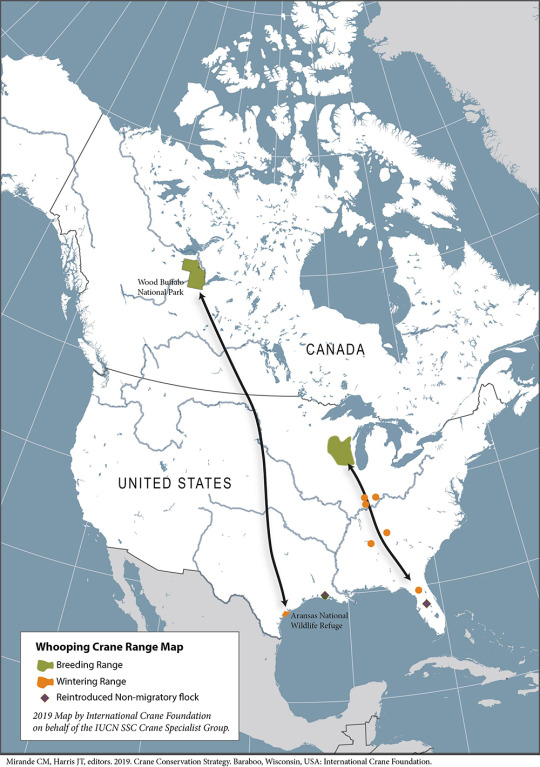
Here's a migration map I took of off savingcranes.org (please visit them, they're so cool)
Diet:
Whoopers (I saw someone call them that) ate omnivores, eating a mix of insects, amphibians, crustaceans, reptiles, and small fish and mammals. They'll also eat grain, marsh plants, plant tubers, and acorns.
Fun Facts:
Whooping Cranes' call sounds like a squeaky door. People will try to tell you it's this majestic, one-note mating call, but it is a door hinge that needs some WD-40. Here's a few videos on what they sound like :)
( https://youtu.be/NFzkXdZjQJM
https://youtu.be/8EobJR_jkjs )
Because of how Whooping Cranes almost went extinct, biologists had used aircrafts to teach young cranes how to migrate. (Here's an article on it: https://www.npr.org/2016/03/02/468045219/to-make-a-wild-comeback-cranes-need-more-than-flying-lessons)
They mate for life! They search for a mate at around 2-3 years, and then mate for life. They'll also continuously return to the same nesting and wintering territories. However, should their original mate die, they'll find another mate.
It's late, otherwise I would do more😭
Sources:
https://www.audubon.org/field-guide/bird/whooping-crane
https://savingcranes.org/learn/species-field-guide/whooping-crane/
https://www.nwf.org/Educational-Resources/Wildlife-Guide/Birds/Whooping-Crane
https://www.allaboutbirds.org/guide/Whooping_Crane/?_gl=1*10vkxuh*_ga*OTQ5Mjc2MzYyLjE2ODg1NDEwODY.*_ga_QR4NVXZ8BM*MTY4ODU0MTA5NS4xLjEuMTY4ODU0MTEyNC4zMS4wLjA.&_ga=2.29534207.1501623720.1688541086-949276362.1688541086
https://abcbirds.org/bird/whooping-crane/
I highly recommend checking these sites out, not just for Whooping Cranes, but for other birds.
3 notes
·
View notes
Photo

[Image Description: A brown dragonfly perches on a flower stem. It’s wings are orange with large spots of dark brown. End ID.]
A male Halloween Pennant (Celithemis eponina) I saw in early August. This species is one of eight in it’s genus, commonly known as Pennants. According to the Kaufman Field Guide to Insects of North America, this common name is in reference to how the species are “often perched at the tip of a weed stalk, waving in the breeze like a pennant.”
#wildlife#nature#entomology#bugblr#bugs#killy killy#Kestrels Observation#zoology#biology#ecology#insects#dragonfly#dragonflies#wildlife photography#nature photography#original photography#inaturalist#insecta#odonata
16 notes
·
View notes
Text
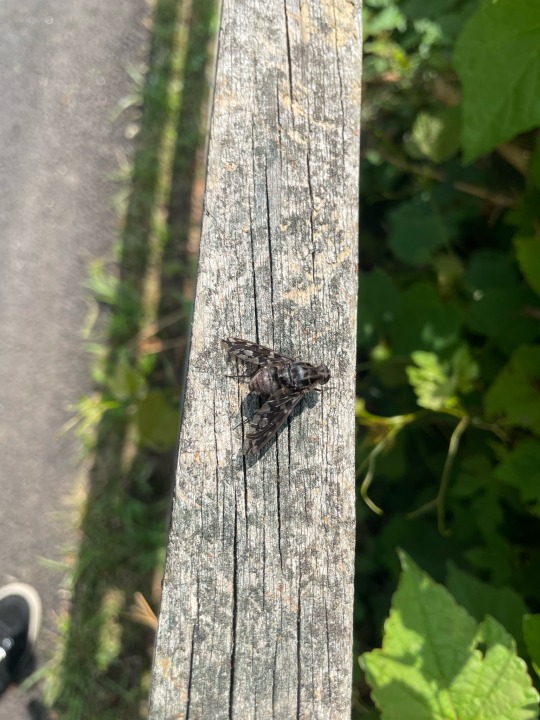
Xenox tigrinus (Diptera: Bombyliidae)
Tiger bee fly
20 of July 2023 - Maryland, USA
I’d been trying to get a good picture of one for a while! They are very large and mysterious, therefore extremely alluring to a lil’ entomologist-in-training like me. I’m so happy to learn about this friend.
“The tiger bee fly is a parasite of large carpenter bees (Xylocopa). Most common in eastern North America, it occurs as far southwest as Arizona.”
- Kaufman Field Guide to Insects of North America (Eaton & Kaufman)
They lay eggs in the entrance of carpenter bee nests, and the larvae of the bee fly consume the larvae of the carpenter bee. So interesting!
#bugs#bugs i found#fly#flies#bee fly#bee flies#tiger bee fly#Insecta#Diptera#Bombyliidae#Xenox#Xenox tigrinus#original content
2 notes
·
View notes
Text
Columbia livia
[Disclaimer: I am a dumb highschool kid who likes plants and nature. I am by no means a professional or an expert in any field. Don’t take anything I say in this or any other post as fact. This is to be taken as the autistic infodumping that it is. I am open to being corrected.]

[Image one: bird feather.]
I often see feathers like this one here on the ground at my local arena.
Throughout my life, I’ve often wondered what they were. I posted one of these to iNaturalist a while back.
Someone suggested it to be a feral rock pigeon, also known as a rock dove. I always take anything Seek or iNaturalist tells me with a grain of salt. The former is a computer, computers require training and it’s not realistic for a computer to be perfectly trained in all the detail that the natural world provides; the latter is a person, and all humans have the capacity to be wrong.
This one made sense, though. Especially after looking into the species. The birds that fly over my head while I ride look just like the ones in the book.
Also, I’ve decided to start citing my sources.
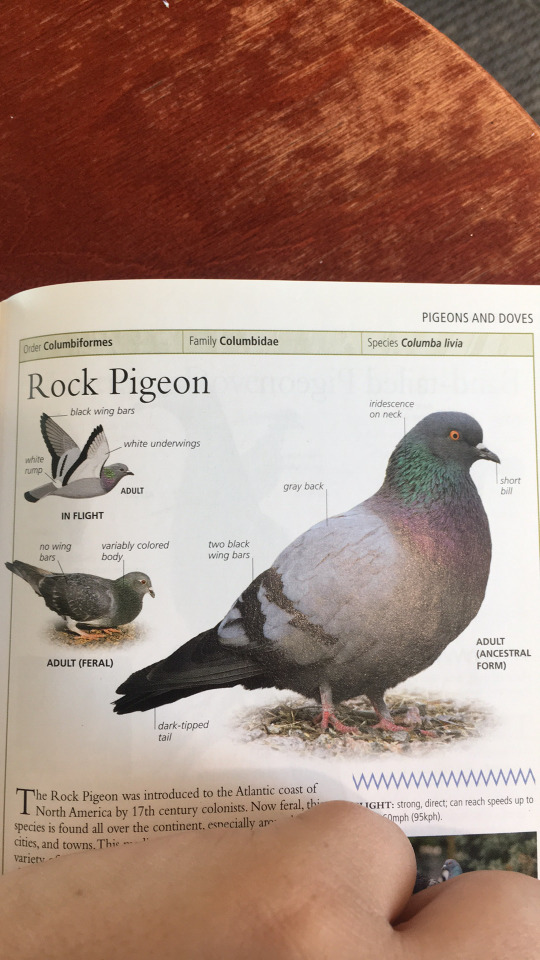
[Image two: columbia livia as pictured in ‘Birds of North America: Western Region’ by François Vuilleumier]
Unfortunately, my local library is incredibly lacking in the Natural Sciences department (or any nonfiction department in general) so I couldn’t find many paper sources.
I’m considering starting a fund to help fix that-.
Now the part you’ve all been waiting for, me brainrotting about a bird species.
The Columbia livia, the most common member of its family within the United States.
This species was introduced by colonists as a domestic species, though wild variants do exist in Africa and parts of Europe. In North America, however, they are an entirely feral species.
This species can be found over the entirety of the US and Mexico as well as southern parts of Canada, they are more common in cities and other populated areas.
Their diet consists of mostly seeds and fruit, and (of course) human food. Despite this, they weigh less than a pound, around 14 pounds on the heavier end of the average. They are not picky eaters and will occasionally go for insects (honestly surprised me that they were not a staple of a pigeon diet)
They mate year round and produce several batches of offspring a year, though they only produce two eggs per batch. They prefer to nest on flat surfaces like the top of buildings or in caves.
They are larger than most doves (as they are pigeons and should be called as such, I will die on this hill) and as a family trait they have their nostrils positioned on a fleshy mound at the top of their short beaks. They are most commonly found in various shades of grey though they do come in other colours.
Also they fly at least 60 mph, which is faster than a horse can run.
Good god, it’s getting late. I have to run back to the arena before I’m late, but here’s a list of sources I found in the library before I leave.
I’ll edit in cover images later, the wifi is being weird here.

[Image three: source book one; ‘Birds of North America: Western Region’ François Vuilleumier]
This one was probably my most handy resource in all of this, it was very information dense.
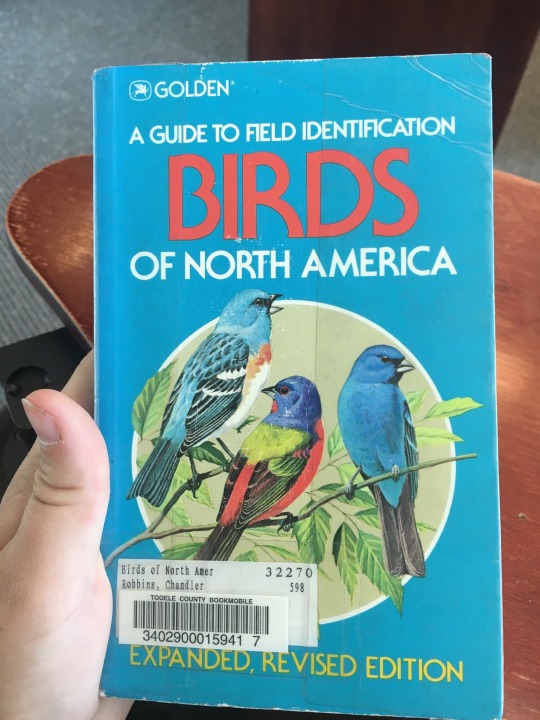
[Image four; ‘A Field to Guide Identification: Birds of North America’ by Chandler Robbins]
This one was mostly used to fluff out the information I already knew, as it had a section on this species but not nearly as large.
Thanks for reading! I’ll be back soon with more species to talk about from the Nevada border area. Until then, be safe.
-Nicholas Engelmann
#nature#birds#backyard birds#naturalist#inaturalist#Columbia livia#rock pigeon#rock dove#Nicholas Engelmann#Nicholas Engelmann - rants
2 notes
·
View notes
Text
BOTD: Great Kiskadee

Photo: Becky Matsubara
"Named for its ringing kis-ka-dee calls, this bird seems to break the rules for the flycatcher family. Besides flying out to catch insects in the air, it also grabs lizards from tree trunks, eats many berries, and even plunges into ponds to catch small fish. Its bright pattern is unique in North America, but in the tropics there are several other flycatchers that look almost identical. The Great Kiskadee is found from Texas to Argentina, and is also very common in Bermuda, where it was introduced in the 1950s."
- Audubon Field Guide
#birds#great kiskadee#birds of north america#north american birds#kiskadees#flycatchers#tyrant flycatchers#passerines#birds of mexico#birds of central america#birds of the us#birding#bird watching#birdblr#birblr#bird of the day#Pitangus sulphuratus
30 notes
·
View notes
Text
Identifying The Red Chested Bird: A Birder's Guide

Welcome, fellow birders! Today, we embark on an exciting journey to uncover the secrets of the red chested bird. If you've ever caught a glimpse of this vibrant avian creature and found yourself wondering about its identity, you've come to the right place. In this birder's guide, we will delve into the fascinating world of the red chested bird, exploring its distinct features, habitat, and unique behaviors. So, grab your binoculars, dust off your field guide, and let's unravel the mysteries of this captivating species together.
As avid bird enthusiasts, we understand the thrill of spotting a new species and the satisfaction that comes with identifying it correctly. The red chested bird, with its fiery plumage and captivating presence, has piqued the curiosity of many birders worldwide. With this guide, we aim to equip you with the knowledge and skills needed to confidently identify this stunning bird in the wild. Whether you're a seasoned birder or just starting your avian adventures, this article will provide valuable insights and practical tips to enhance your birding experience.
So, join us as we embark on this exhilarating quest to unravel the mysteries of the red chested bird. Together, we'll explore its striking appearance, its preferred habitats, and the unique behaviors that make it a true marvel of the avian world. Get ready to spread your wings and soar into the realm of birding bliss as we unlock the secrets behind identifying the red chested bird. Let's dive in!
Identifying the Red Chested Bird: A Birder's Guide
Are you a bird enthusiast looking to identify the red chested bird? Look no further! This birder's guide will provide you with all the information you need. The red chested bird, also known as the Scarlet Tanager, is a vibrant species commonly found in North America. To identify this bird, keep an eye out for its striking red chest, black wings, and yellow plumage. Its distinctive call is another clue to look out for. Happy birding!
Identifying the Red Chested Bird: A Birder's Guide
The world of birding is filled with fascinating and beautiful creatures, each with its own unique characteristics and behaviors. One such bird that has captured the attention of birders around the world is the Red Chested Bird. This stunning avian species is known for its vibrant red plumage on its chest, making it easily distinguishable from other birds. In this comprehensive guide, we will delve into the intricacies of identifying the Red Chested Bird, providing valuable insights and tips for birders of all levels. So grab your binoculars and let's embark on a journey to discover the wonders of this magnificent bird!
The Appearance of the Red Chested Bird
When it comes to identifying the Red Chested Bird, its appearance plays a crucial role. This species is characterized by its vibrant red chest, which contrasts beautifully with its black wings and back. The male Red Chested Bird boasts a more striking appearance, with its red plumage extending to its face and throat. On the other hand, the female Red Chested Bird exhibits a slightly duller coloration, with a lighter shade of red on its chest. Both genders, however, share the same distinctive red chest that sets them apart from other bird species.
In addition to its chest coloration, the Red Chested Bird has a medium-sized body, measuring around 6 to 8 inches in length. Its wingspan ranges from 9 to 11 inches, allowing it to maneuver swiftly through the air. The bird's beak is short and pointed, ideal for capturing insects and small invertebrates, which make up a significant portion of its diet. Its legs are relatively short and sturdy, enabling it to perch on branches and navigate its surroundings with ease.
Distinctive Features of the Red Chested Bird
Apart from its red chest, the Red Chested Bird possesses several other distinctive features that aid in its identification. One such feature is its black wings, which are adorned with white stripes or spots. These markings create a striking contrast against the bird's red plumage, making it easily recognizable even from a distance. Additionally, the Red Chested Bird has a sharp, pointed beak that is perfectly adapted for its feeding habits. Its beak allows it to pry open tree bark and capture insects hidden within, showcasing its remarkable hunting skills.
Another noteworthy feature of the Red Chested Bird is its melodic song. This species is known for its beautiful and intricate vocalizations, which consist of a series of whistles, trills, and melodious notes. The bird's song is often used as a means of communication, allowing it to attract mates and establish territorial boundaries. By listening closely to its unique song, birders can further confirm the presence of the Red Chested Bird in a particular area.
Preferred Habitats of the Red Chested Bird
To effectively identify the Red Chested Bird, it is essential to understand its preferred habitats. This species is commonly found in wooded areas, particularly those with a dense canopy and ample vegetation. The bird thrives in forests, woodlands, and parks, where it can find an abundance of food sources and suitable nesting sites. It is particularly fond of areas with a mix of deciduous and coniferous trees, as these provide a diverse range of insects and small invertebrates.
During the breeding season, the Red Chested Bird tends to select nesting sites in tree cavities or abandoned woodpecker holes. It meticulously constructs its nest using twigs, leaves, and moss, creating a cozy and secure environment for its eggs and hatchlings. The bird is known for its loyalty to its nesting site, often returning to the same location year after year.
Range and Migration Patterns
The Red Chested Bird has a wide range that extends across various regions, including North America, Europe, and Asia. In North America, it can be found in the northern parts of the United States and Canada, especially during the summer months. During the winter, some individuals migrate to warmer regions in the southern parts of the United States and Mexico. In Europe and Asia, the bird is prevalent in countries such as Russia, Germany, and China.
Migration patterns vary among individuals and populations of the Red Chested Bird. While some birds undertake long-distance migrations, others may remain in their breeding grounds year-round. It is important for birders to be aware of these patterns to increase their chances of spotting the Red Chested Bird during specific seasons.
Behavior and Feeding Habits
Understanding the behavior and feeding habits of the Red Chested Bird is vital for its accurate identification. This species is primarily insectivorous, meaning it feeds on a variety of insects, spiders, and small invertebrates. It uses its sharp beak to extract these prey items from tree bark, and it may also catch insects mid-air during its aerial foraging.
The Red Chested Bird is known for its agile flight, darting through the air with impressive speed and precision. It is often observed perching on branches or tree trunks, scanning its surroundings for potential prey. When it spots an insect or invertebrate, it swiftly swoops down to capture it, displaying its remarkable hunting skills. Birders should keep an eye out for these behaviors when attempting to identify the Red Chested Bird in the field.
Interesting Facts about the Red Chested Bird
- The scientific name of the Red Chested Bird is Parus ruber.
- It belongs to the family Paridae, which includes other species of tits and chickadees.
- The Red Chested Bird is known for its curious and inquisitive nature, often investigating its surroundings with great enthusiasm.
- This species is highly adaptable and can adjust to various habitat types, including urban areas and gardens.
- The Red Chested Bird is a cavity nester, meaning it relies on pre-existing holes or crevices in trees for nesting purposes.
Tips for Spotting the Red Chested Bird
Spotting the Red Chested Bird in the wild can be a rewarding experience for birders. To increase your chances of sighting this magnificent species, follow these tips:
1. Research its preferred habitats: Familiarize yourself with the types of environments the Red Chested Bird frequents, such as woodlands and forests.
2. Learn its vocalizations: Listen to recordings of the Red Chested Bird's song to help distinguish it from other bird species.
3. Observe feeding behaviors: Watch for the bird's swift flight and perching habits, as it often hunts for insects near tree bark.
4. Be patient and observant: Spend time in areas where the Red Chested Bird is known to reside, patiently scanning the surroundings for any signs of its presence.
5. Seek guidance from experienced birders: Join local birding groups or seek advice from seasoned birders who may have spotted the Red Chested Bird in your area.
By following these tips and staying attentive, you'll be well on your way to identifying and appreciating the beauty of the Red Chested Bird.
Add More Relevant H2 Headings
Red Chested Bird vs. Other Similar Bird Species
Distinguishing the Red Chested Bird from the Black-Capped Chickadee
The Black-Capped Chickadee is another bird species that shares some similarities with the Red Chested Bird. However, there are key differences to note when trying to differentiate between the two:
- Plumage: The Black-Capped Chickadee has a black cap and throat, contrasting with its white cheeks and underparts. In comparison, the Red Chested Bird has a red chest and black wings.
- Vocalizations: The Black-Capped Chickadee has a distinct "chick-a-dee-dee-dee" call, while the Red Chested Bird has a more melodious and varied song.
- Habitat: The Black-Capped Chickadee is commonly found in a range of habitats, including woodlands, parks, and suburban areas. The Red Chested Bird, on the other hand, prefers wooded areas with a dense canopy.
Distinguishing the Red Chested Bird from the Rufous-Sided Towhee
The Rufous-Sided Towhee is another bird species that may be mistaken for the Red Chested Bird due to their shared red plumage. However, several distinguishing factors can help differentiate between the two:
- Size: The Rufous-Sided Towhee is larger than the Red Chested Bird, measuring around 7 to 8 inches in length, compared to the Red Chested Bird's 6 to 8 inches.
- Plumage: While both birds have red plumage, the Rufous-Sided Towhee has a reddish-brown back and wings, whereas the Red Chested Bird has black wings.
- Habitat: The Rufous-Sided Towhee is commonly found in shrubby areas and brushy habitats, while the Red Chested Bird prefers wooded areas with a dense canopy.
By understanding these differences, birders can confidently identify the Red Chested Bird and distinguish it from similar species.
Conclusion
In conclusion, identifying the Red Chested Bird requires careful observation of its appearance, habitat preferences, behavior, and vocalizations. By familiarizing yourself with its distinctive features and following the tips mentioned in this guide, you'll be well-equipped to spot this captivating bird in the wild. So, grab your binoculars and venture into nature, where the beauty of the Red Chested Bird awaits your discovery. Happy birding!
Key Takeaways: Identifying the Red Chested Bird - A Birder's Guide
- The red chested bird is a beautiful species commonly found in forests and woodlands.
- Its distinctive red chest makes it easy to identify among other birds.
- Pay attention to its size and shape, as well as its unique song, to help identify the red chested bird.
- Look for specific markings like black wings and a white belly to confirm its identity.
- Using a bird guide or field app can be helpful in properly identifying the red chested bird.
Frequently Asked Questions
1. What is the size of the red chested bird?
The size of the red chested bird can vary depending on the species. On average, the red chested bird measures about 6 to 7 inches in length and has a wingspan of around 10 to 12 inches. However, it's important to note that there are different species of red chested birds, so their sizes may slightly differ.
When trying to identify a red chested bird, pay attention to its overall size, comparing it to other birds in its surroundings. This can help you narrow down the possibilities and make a more accurate identification.
2. How can I identify the red chested bird by its plumage?
The plumage of the red chested bird is one of its most distinctive features. Look for a bird with a bright red chest and a contrasting color on its back and wings. The shade of red can vary among species, ranging from a vibrant scarlet to a deeper crimson.
In addition to its red chest, the red chested bird may have other distinguishing markings. Some species have unique patterns on their wings or a white or black collar around their necks. Use a field guide or birding app to compare the plumage of the bird you're observing with known red chested bird species to help with identification.
3. Where can I find the red chested bird?
The red chested bird can be found in various habitats across different regions. Some species of red chested birds prefer dense forests, while others inhabit open woodlands or grasslands. They can also be found in both rural and urban areas.
To increase your chances of spotting a red chested bird, visit areas with suitable habitats such as parks, nature reserves, or even your own backyard if it provides the necessary conditions. Keep an eye out for their distinctive plumage and listen for their unique calls to help locate them.
4. What is the diet of the red chested bird?
The diet of the red chested bird primarily consists of insects, seeds, fruits, and nectar. Different species may have specific preferences within these food categories. Some red chested birds are known to be excellent insect hunters, while others rely more on plant materials.
If you're trying to attract red chested birds to your backyard, consider providing a variety of food sources such as bird feeders with seeds and nectar, as well as planting native flowers and shrubs that produce fruits and attract insects.
5. Are red chested birds migratory?
Yes, many species of red chested birds are migratory. They undertake seasonal journeys, often over long distances, to find suitable breeding and feeding grounds. Migration patterns can vary among different species, with some traveling hundreds or even thousands of miles.
Understanding the migration patterns of red chested birds can be helpful in identifying them. Certain species may only be present in certain regions during specific times of the year, so timing your birdwatching outings accordingly can increase your chances of spotting them.
How to Identify Birds Beginner Friendly !!
Final Thoughts
After reading this comprehensive guide, you should now feel confident in your ability to identify the elusive red chested bird. Armed with the knowledge of its distinct features, habitat preferences, and unique behaviors, you'll be well-equipped to spot this beautiful creature during your birding adventures. Remember, patience and keen observation are key when searching for this elusive species.
By following the tips and techniques outlined in this guide, you can enhance your birding experience and deepen your connection with nature. Whether you're a seasoned birder or just starting out, the thrill of identifying the red chested bird is sure to bring you joy and a sense of accomplishment. So grab your binoculars, head out into the wild, and let the search begin!
As you embark on your quest to find the red chested bird, don't forget to document your sightings and share your experiences with fellow birders. By contributing to the collective knowledge and understanding of this species, you're not only enriching the birding community but also contributing to its conservation. Happy birding, and may you have many memorable encounters with the red chested bird!
Read the full article
0 notes
Text
Title: Animal Migrations: A Marvel of Nature's Navigation
Introduction:
Animal migration refers to the seasonal movement of various species from one habitat to another, typically driven by the need for resources, breeding, or climate conditions. These remarkable journeys span vast distances and involve countless individuals, showcasing nature's ingenuity and the remarkable adaptability of these creatures. This essay explores the intricacies of animal migrations, highlighting their purposes, patterns, and the extraordinary challenges faced by migrating species.
Body:
1. Purpose of Migration:
Animal migrations serve several critical purposes for different species:
a. Breeding: Many migratory species travel long distances to reach specific breeding grounds, where they can find abundant food and suitable conditions for reproduction.
b. Resources: Migratory animals often follow food sources, such as plants, insects, or other animals, which may be available in different locations at different times of the year.
c. Climate: Some species migrate to escape harsh climates or to take advantage of favorable weather conditions in different regions.
d. Escape Predators: Migration can also help animals evade predators or find safer environments for survival.
2. Types of Migration:
Animal migrations can be classified into various types based on the species' behavior and patterns:
a. Seasonal Migration: This is the most common type, where animals travel long distances during specific seasons. Examples include the migration of birds, mammals, and fish.
b. Altitudinal Migration: Some animals, like certain bird species or mountain-dwelling mammals, move up or down mountain slopes in response to changing weather or resource availability.
c. Latitudinal Migration: Certain species, such as whales or butterflies, migrate along a north-south axis, usually between breeding and feeding grounds.
3. Extraordinary Examples of Animal Migrations:
a. Arctic Tern: The Arctic tern holds the record for the longest migratory journey, traveling from its breeding grounds in the Arctic to its wintering grounds in Antarctica, covering a round trip of over 70,000 kilometers.
b. Wildebeest Migration: Every year, approximately 1.5 million wildebeest, accompanied by zebras and gazelles, migrate in search of fresh grazing in the Serengeti ecosystem, covering vast distances and crossing treacherous rivers.
c. Monarch Butterflies: Monarchs undertake a multi-generational migration, with individuals traveling thousands of kilometers from North America to overwintering sites in Mexico or California, guided by celestial cues.
d. Pacific Salmon: These remarkable fish navigate back to their exact birthplace in order to spawn, using a combination of their sense of smell, the Earth's magnetic field, and environmental cues.
4. Challenges and Adaptations:
Animal migrations present numerous challenges that species must overcome through remarkable adaptations:
a. Navigation: Migratory animals utilize various mechanisms for navigation, including the sun, stars, Earth's magnetic field, landmarks, and even olfactory cues.
b. Physical Endurance: Many migratory journeys require exceptional physical stamina as animals face hunger, fatigue, and extreme weather conditions.
c. Predators and Obstacles: Migratory species encounter natural obstacles like mountains, rivers, and oceans, as well as threats from predators along their routes.
d. Habitat Loss and Climate Change: Human activities, including habitat destruction and climate change, pose significant threats to migratory species by altering their habitats or disrupting the timing of their migrations.
Conclusion:
Animal migrations are awe-inspiring phenomena that demonstrate the resilience, adaptability, and intricate navigational abilities of countless species. These journeys play a vital role in maintaining ecosystems, spreading genetic diversity, and ensuring the survival of diverse animal populations. However, the preservation of these remarkable migrations requires a collective effort to protect.

0 notes
Note
Top ten large bugs
That is a very hard question! The Ants of North America (written by Douglas M. Wrights and illustrated by Roger H. Smith) gets the highest rating from people who've read it -- a good illustration of the point that we often have limited, if any, knowledge about what things are "for". (Even if we take things like "to keep my ants warm in winter", "to help move my car up the incline", etc., as having a specific, "real," "instrumental" function, we still don't know what that function is!)
My favorites? The cockroach in the photo below, which has a sort of elegant simplicity, even though it is a complicated little critter. And the tarantula hawk wasp, which strikes me as being "scary" in the same way "spooky," which is not the same as "terrifying."
Of bugs that are "merely" large, there's the harvester ant, who seems to be a perfectly functional animal in itself -- they have their own food and nest and so on -- and has only a few simple, neat adaptations: their eyes are arranged to have a good field of vision in all directions, their mandibles are big enough to be used like arms, their antennae look like the legs of an insect instead of legs fused to the head, and their jaws are strong enough to bite open palm-sized prey. That's a fun sort of small-scale, low-level functionality. (There's probably a point about the difference between an animal that evolved by incremental change and one that didn't, but you get the idea.)
I like all sorts of very big things. Here's one that I think is especially aesthetically appealing:
The dragonfly. It's the biggest bug in Entire Species Catalogue, A Scientific Guide to the Insects of America and the World, by Brian Gratwicke. It's got a beautiful, dragonlike head with a long, "wavy" crest, and two large front legs, and it looks like a great example of "cuteness with menace." But the dragonfly has a very simple and elegant life cycle: it hatches from an egg, grows larger and larger as it matures, eats a few times while it develops, and eventually becomes a mature adult with very complex internal organs and several pairs of long, "hair-like" legs with very sharp claws, and flies away to mate and lay eggs, which it does (with the help of its long legs).
(I was going to do a post on dragonflies here but I don't think I can put together a complete picture without a much larger, longer post than is currently allowed on my blog.)
I guess there are other really big things which don't make much aesthetic sense to me. Like the snake or the lionfish -- I kind of like the snake but the lionfish is just "wow, that is really big, like, a lot of big." It has these weird pouches and it looks like it could kill you or something but also it just looks like it's in your way?
The Ants of North America is very big and its main function is "be funny," but I also appreciate it for being a real life form, that is, an actual animal with its own distinctive, unique, life cycle.
6 notes
·
View notes